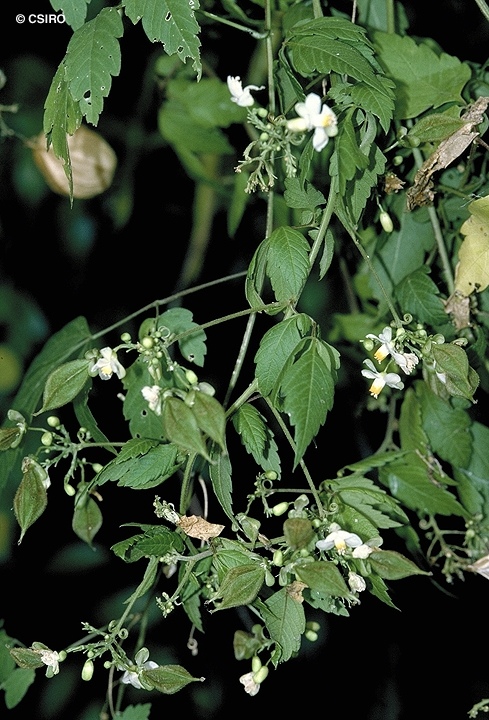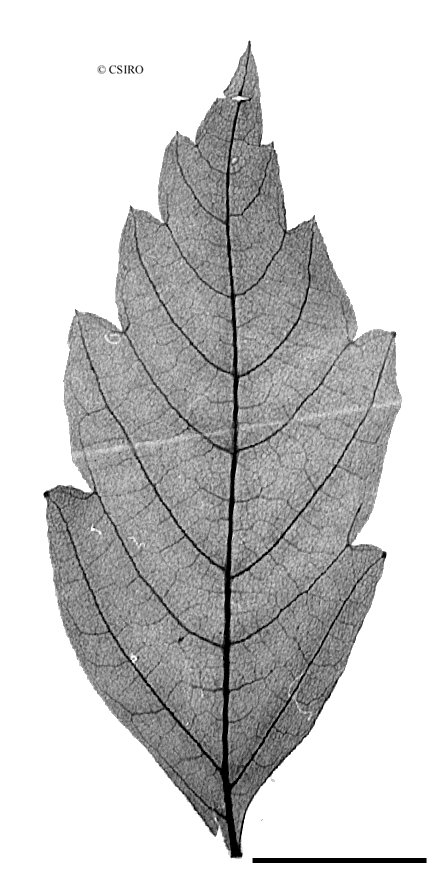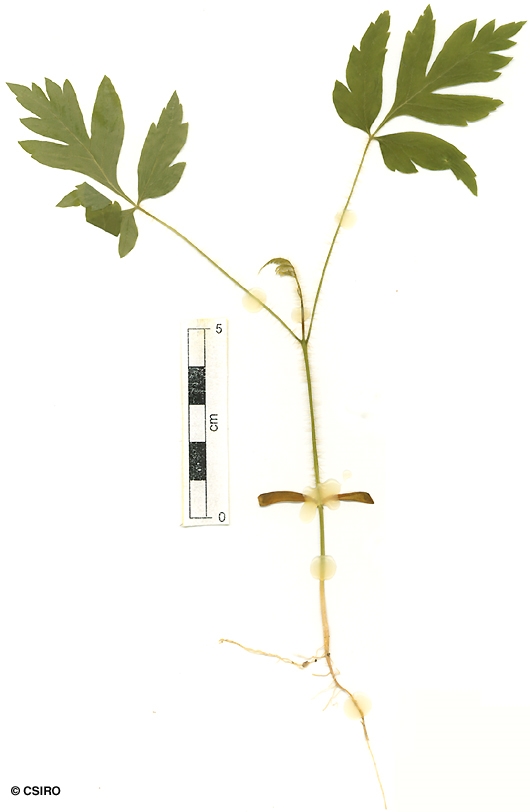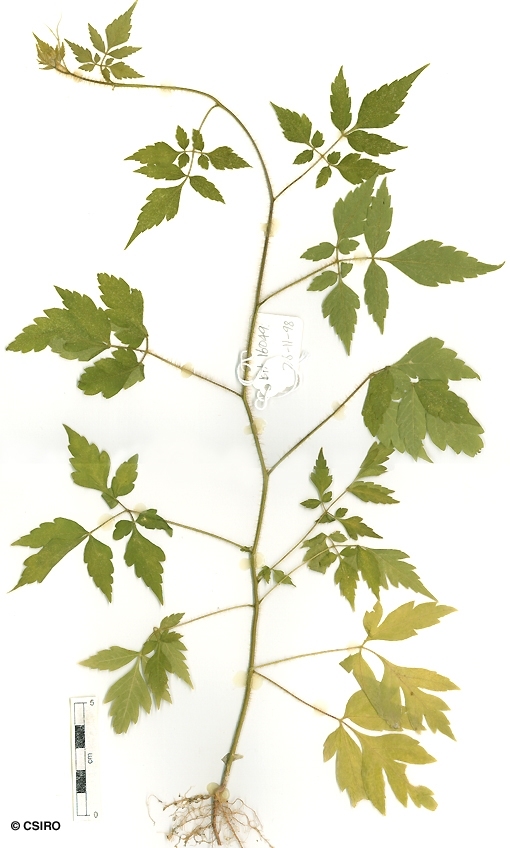Australian Tropical Rainforest Plants - Online edition
Cardiospermum grandiflorum Sw.





Swartz, O.P. (1788) Nova Genera & Species Plantarum seu Prodromus : 64. Type: Jamaica, collector unknown.
Balloon Vine; Vine, Heart Seed; Heart Seed Vine; Vine, Balloon
A slender vine not exceeding a stem diameter of 2 cm.
Leaves trifoliolately bipinnate. Leaflet blades about 3.5-8 x 2-5 cm, leaflet stalks 0-1 cm long. The middle leaflet in each group is usually larger than the associated lateral leaflets. Lateral veins extend from the midrib to both the marginal teeth (or lobes) and the sinuses (or bays) in the leaflet blade margin. Twig pith rather copious.
Coiled tendrils usually present at the apex of the inflorescence peduncle. Calyx lobes (sepals) arranged as two pairs, the inner pair larger, about 8 x 4-5 mm, the outer pair about 2-3 mm long. Petals about 9-10 x 4-5 mm. Two large petal-like scales attached to the petals, each scale ending in a bright yellow lobed apex. Stamens eight, filaments fused towards the base. Disk consists of two long peg-like lobes. Ovary hairy on the outer surface.
Fruits inflated, +/- three-lobed in section, about 3.5-5 x 3.5 cm, style persistent at the apex, sepals persistent at the base. Seeds globular, about 6-7 mm diam., attached to the middle of a wing about 35-40 x 22-25 mm (Seed wings develop from the walls of the fruit locules.). Embryo globular, about 5-6 mm diam. Cotyledons folded and rolled around one another. Radicle about 1 mm long.
Cotyledons thick and fleshy, about 13-17 x 4-5 mm, cuneate or oblong, caducous, apex +/- truncate, petioles very short or absent. First leaves trifoliolate, leaflets sessile and coarsely toothed or lobed. Third leaf bipinnate. At the tenth leaf stage: leaf compound, bipinnate, terminal leaflet larger than the lateral leaflets. Lateral leaflets +/- sessile. Terminal leaflet blade about 5-6 x 1.5-2 cm. All leaflet margins coarsely toothed with about two to five teeth on each side. Upper and lower leaflet surfaces clothed in pale brown prostrate hairs. Midrib raised on the upper surface. Stems, branches, compound leaf petioles and compound leaf axes clothed in long brown erect hairs. Two-branched tendrils present in the axils of the compound leaf, if not at the tenth leaf stage then normally by the 11th or 12th leaf stage. Stipules persistent, about 0.5 mm long. Seed germination time 30 to 37 days.
Although not known to have been used in Australia, the plant has entered into medicinal treatments elsewhere. Cribb (1981).





